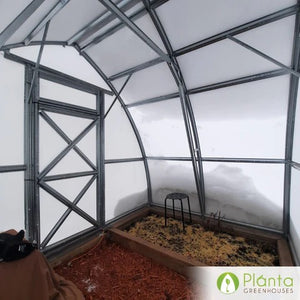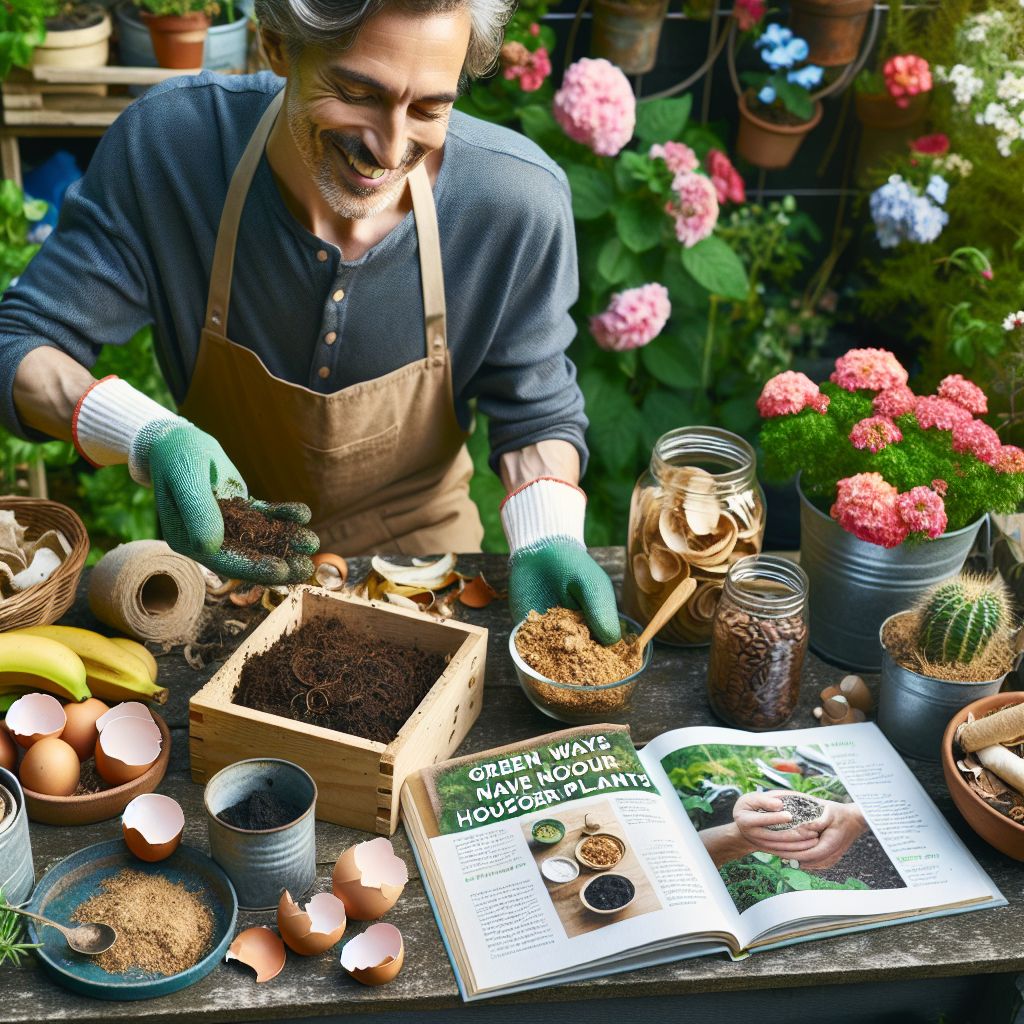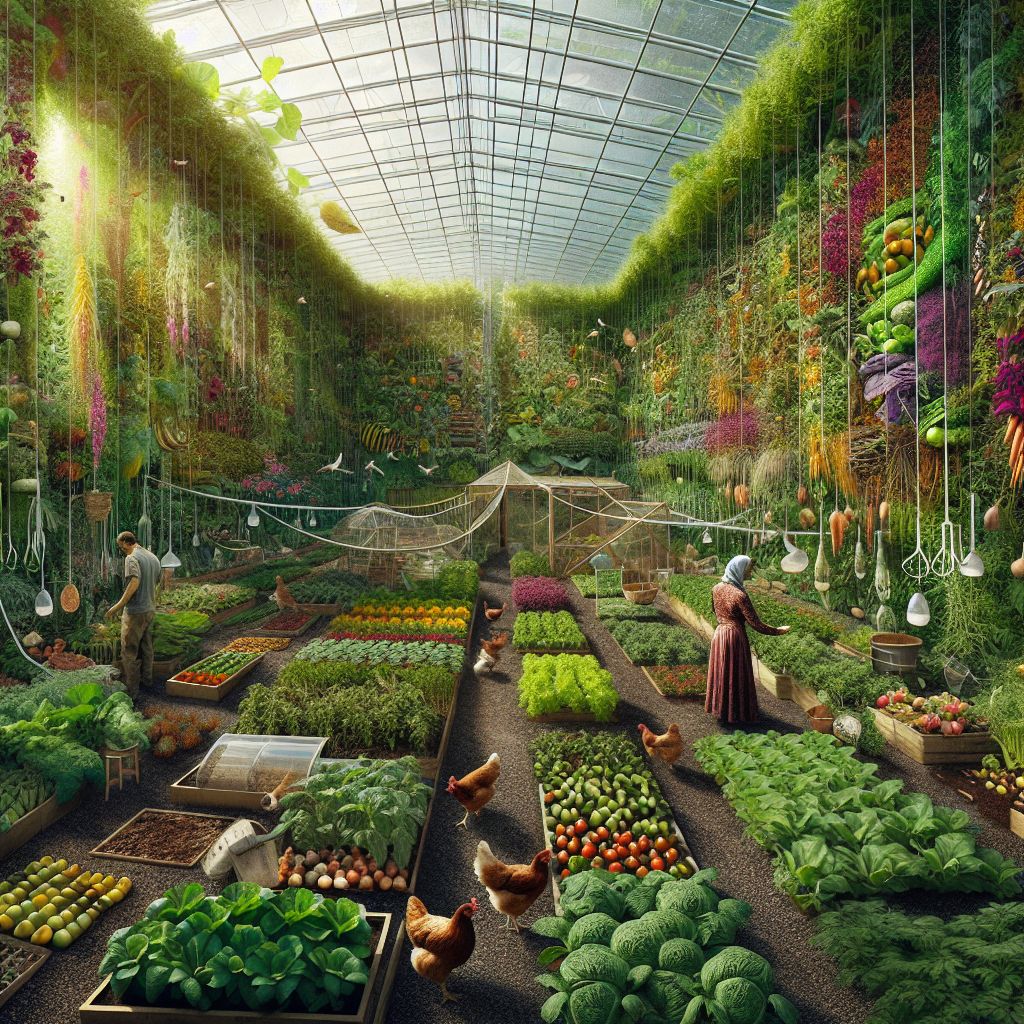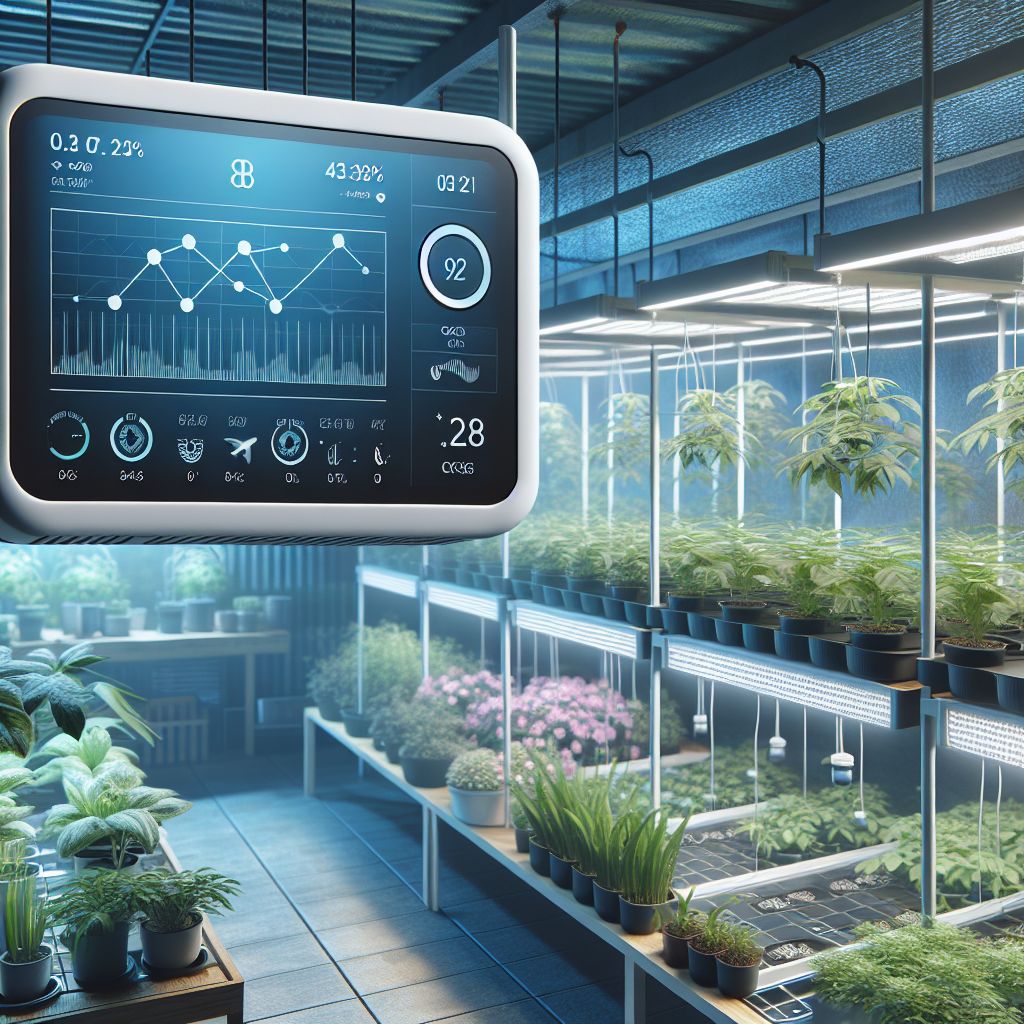Key Takeaways
-
Patching small cracks in greenhouse glazing can be a simple DIY job using the right sealant.
-
When replacing glazing, always measure twice to ensure you cut the material accurately.
-
Polycarbonate and acrylic are durable alternatives to glass that can save you money in the long run.
-
Regular maintenance, like cleaning and checking for damage, can extend the life of your greenhouse glazing.
-
Choose glazing materials based on your climate to optimize for energy efficiency and plant health.
Greenhouse Glazing Repair Tips
When you spot a crack in your greenhouse, it’s not just an eyesore, it’s a potential threat to your plants cozy home. Fear not, because with a steady hand and a bit of know-how, you can seal that breach in no time. Let’s dive into how to keep your green oasis in tip-top shape.
Patching Minor Cracks and Gaps
First things first, you’ll want to address any small cracks or gaps before they turn into bigger problems. For this job, you’ll need a clear, weather-resistant sealant. Silicone or acrylic sealant works wonders for these minor repairs. Here’s how you do it:
-
Clean the area around the crack with soapy water and a cloth to ensure the sealant adheres properly.
-
Dry the area thoroughly because sealant doesn’t stick to wet surfaces.
-
Apply the sealant directly into the crack, then smooth it out with a putty knife or your finger covered in soapy water to prevent sticking.
-
Let it cure according to the product instructions – patience is key here.

“The Essential Greenhouse Sealing Guide …” from plantagreenhouses.com
Just like that, you’ve extended the life of your greenhouse panel and protected your plants from the elements.
Sealing Techniques for Improved Insulation
Now, if you’re noticing a chill in the air or a spike in your heating bill, it might be time to beef up your greenhouse’s insulation. Sealing any gaps not only keeps the cold out but also traps precious warmth where your plants need it most. For this, you’ll need weather stripping or foam insulation tape.
-
Identify any gaps where air might be escaping. Common culprits are the spaces between panels or around doors and vents.
-
Cut the weather stripping or foam tape to size and press it firmly into place.
-
For doors and vents, consider adding a layer of plastic film over the opening as an extra barrier against heat loss.
With these simple steps, you’ll create a snug environment that’s more energy-efficient and cozy for your plants. For more detailed information on greenhouse glazing options, check out Greenhouse Glazing Options.
Step-by-Step Replacement Process
When a panel is beyond a quick fix, replacing it is your best bet. You might feel a bit daunted, but I’ll walk you through it so you can tackle this project with confidence.
Tools and Materials You’ll Need
Before you start, gather your materials. You’ll need:
-
New glazing material (polycarbonate or acrylic)
-
Measuring tape
-
Utility knife or fine-toothed saw
-
Drill (if your greenhouse frame requires bolts)
-
Silicone sealant
-
Wearing gloves for safety

Choosing the right material is crucial. Polycarbonate is tough and retains heat well, while acrylic is crystal clear and scratch-resistant. Both are solid choices and more forgiving than glass if you’re new to this.
Measuring and Cutting Your Glazing Material
Measuring accurately is the golden rule of DIY – measure twice, cut once. After removing the damaged panel, measure the opening from edge to edge, then subtract a small margin to allow for expansion. Mark your new panel and score it with your utility knife or cut it with your saw. Go slow to avoid chipping or cracking the material.
Ensuring a Proper Fit
Test fit the new panel before you secure it. It should sit comfortably in the frame without forcing it. If it’s too snug, trim it down bit by bit. It’s easier to take more off than to add it back on!
Securing the New Glazing
Once you’re happy with the fit, it’s time to lock it in place. If your frame uses clips or springs, pop those on. For bolted frames, drill holes in your panel (smaller than the bolt to keep it tight) and fasten it down. Seal the edges with silicone to keep moisture out.
Remember, when drilling holes, always start with a smaller drill bit to make a pilot hole. This prevents the material from cracking.
And there you have it, a fresh panel to keep your greenhouse looking sharp and your plants thriving. Let’s move on to understanding why all this glazing business matters so much.
Why Glazing Matters for Your Greenhouse
Glazing isn’t just about keeping the rain off your tomatoes, it’s the lifeline of your greenhouse, controlling light, temperature, and humidity – the trifecta for plant happiness. Getting this right means your green friends will thrive, not just survive.
Benefits of a Functional Glazing System
A well-maintained glazing system does wonders for your greenhouse. It maximizes light penetration for photosynthesis, keeps heat in during cold spells, and protects against harmful UV rays. Plus, it prevents pesky pests from making themselves at home among your plants.
But that’s not all. A solid glazing system can also save you money on energy costs by retaining heat more efficiently. And let’s not forget, it adds to the aesthetic appeal of your garden sanctuary – clear, clean panels mean a more inviting space for both you and your plants. For those considering a greenhouse, understanding the best greenhouse kits can be an essential part of the planning process.
Common Glazing Materials Compared
When it comes to materials, you’ve got options: learn about the best plants and vegetables to cultivate in your greenhouse to make an informed decision.
|
Material |
Light Transmission |
Durability |
Insulation |
Cost |
|---|---|---|---|---|
|
Polycarbonate |
High |
Very High |
Good |
Medium |
|
Acrylic |
Very High |
High |
Low |
Medium |
|
Glass |
Very High |
Low |
Variable |
High |
Choose based on what’s important for you. If you’re in a hail-prone area, polycarbonate’s toughness is a winner. If clarity is your top priority, go for acrylic. Glass is classic, but it’s more fragile and can be pricey.
Assessing Your Greenhouse’s Glazing Needs
Take a good look at your greenhouse. Is it doing its job? If your plants seem stressed or your heating costs are sky-high, your glazing might be telling you something. Listen closely.
Consider the age of your greenhouse and the local climate. Over time, panels can become cloudy or discolored, which reduces light transmission – a big no-no for your photosynthesizing pals.
Identifying Signs of Glazing Wear
Keep an eye out for:
-
Cracks or holes that invite cold air and pests
-
Discoloration that blocks sunlight
-
Loose panels that can lead to structural issues
-
Spotting these early means you can act fast and keep your greenhouse in prime condition.

When to Repair vs. Replace
So, should you repair or replace? Here’s the deal:
-
Repair if the damage is minor, like small cracks or gaps. Sealants and tapes are your friends here.
-
Replace if the damage is extensive or the panel is old and affecting your greenhouse’s performance. New panels can be a fresh start for your greenhouse.
Trust your gut – if a panel looks too far gone, it probably is. Better to invest in a new one than to keep patching up an old problem.
Enhancing Glazing Longevity
Good news – with a little TLC, your greenhouse glazing can last years. It’s all about regular check-ups and acting before small issues become greenhouse headaches.
Regular Maintenance Tips
Here’s your maintenance checklist: For detailed steps on replacing parts of your greenhouse, consider reading about how to replace a greenhouse panel.
-
Clean your panels with a mild detergent to keep them clear and maximize light.
-
Inspect for damage regularly, especially after extreme weather.
-
Tighten any loose fixtures to maintain structural integrity.
Sticking to this routine will keep your greenhouse looking good and working hard.
Preventative Measures to Avoid Future Damage
Besides that, consider these preventative steps:
-
Trim overhanging branches that could fall and damage your greenhouse.
-
Ensure proper drainage around your greenhouse to prevent water damage.
-
During winter, regularly remove snow from the roof to avoid excess weight and potential collapse.
Think of your greenhouse as a teammate – protect it, and it’ll protect your plants.
Cost-Saving Strategies for Greenhouse Glazing
Replacing or repairing greenhouse glazing doesn’t have to break the bank. Let’s talk about how to keep costs down without compromising on quality.
DIY vs. Professional Repair Costs
If you’re handy, a DIY repair can save you a bundle. Most small repairs are well within the reach of a weekend warrior, and you’ll learn a skill in the process. For bigger jobs, though, don’t be shy about calling in a pro. Their expertise can prevent costly mistakes and save you money in the long run.
Remember, your greenhouse is the heart of your garden. Treat it well, and it’ll be the gift that keeps on giving – fresh veggies, vibrant flowers, and that unbeatable feeling of stepping into a warm, green space on a chilly day. Now, roll up your sleeves and show that glazing who’s boss!
Material Choice for Budget Management
When it comes to materials, think long-term. Cheaper isn’t always better, especially if you have to replace it more often. Polycarbonate and acrylic might cost more upfront than other materials, but their durability and energy efficiency can lead to savings over time. Compare the lifespan and benefits of each material to find the best fit for your budget.
Making the Smart Choice: Glazing Options for Every Climate
Your local climate should be a major factor in your glazing choice. After all, what works in a mild, temperate area might not hold up in a region that gets heavy snow or scorching sun.
Adapting Glazing to Seasonal Changes
Here’s the trick: adapt your glazing to the seasons. In colder climates, double-walled polycarbonate provides excellent insulation. For hotter areas, a single-walled, UV-protected option might be better to prevent overheating. And for those in variable climates, consider glazing that can be easily swapped or adjusted for the season.
Climate-Specific Material Recommendations
Let’s break it down: for those looking into greenhouse glazing options, it’s important to consider the climate you’re in to make the best choice for your needs.
-
In snowy areas, go for polycarbonate with its high impact resistance.
-
For places with high sun exposure, acrylic with UV protection will prevent yellowing and ensure longevity.
-
If you’re in a windy spot, look for glazing that’s flexible and can withstand a bit of bending.
Frequently Asked Questions
Got questions? I’ve got answers. Here’s the lowdown on some common queries about greenhouse glazing.
Can I Repair Glazing Without Removing the Whole Panel?
Yes, for minor cracks or holes, you can apply a sealant or adhesive tape directly to the damaged area without removing the panel. Just make sure the area is clean and dry for the best adhesion.
If the damage is more serious, like a large crack or a hole, you might need to remove the panel to apply a patch or, in some cases, replace the entire sheet.
Are There Temporary Fix Options for Immediate Glazing Problems?
Absolutely. If you’re in a pinch, clear duct tape or a specially designed greenhouse repair tape can provide a quick fix. Just remember, these are temporary solutions, and you’ll want to address the issue properly as soon as possible to protect your plants and the integrity of your greenhouse.
For a hole, you can cover it with a piece of the same glazing material or even a sturdy plastic until you can get a permanent replacement.
Remember, temporary fixes are just that – temporary. They’ll buy you time, but don’t put off the inevitable repair or replacement.
Example: When a sudden hailstorm cracked several panels on my greenhouse, I used clear polyethylene repair tape to seal the cracks until I could replace the panels. It held up well against the elements, buying me enough time to get the right materials.
How Often Should Glazing Be Replaced in a Greenhouse?
It varies, but on average, polycarbonate glazing should last about 10 years, while acrylic can last up to 15 years if well-maintained. Glass can last even longer, but it’s more susceptible to breakage.
Keep an eye out for signs of wear, like yellowing, brittleness, or reduced light transmission, which indicate it’s time for a change.
Is it Cheaper to Replace or Repair Greenhouse Glazing?
It depends on the extent of the damage. Small repairs can be done cheaply with sealant or tape, but if you’re constantly patching up an old panel, it might be more cost-effective to replace it. Consider the age of the glazing and whether a new panel would improve energy efficiency and plant health.
What Are the Insulating Properties of Different Glazing Materials?
Different materials offer different levels of insulation:
-
Double-walled polycarbonate has air pockets that provide good insulation.
-
Acrylic is less insulating but allows more light through, which can be beneficial for plant growth.
-
Glass varies, single-pane offers little insulation, while double-pane can be quite insulating but is more expensive.
Consider your climate and your plants needs when choosing your glazing material for the best balance between insulation and light transmission. For more detailed information, read our year-round greenhouse growing guide.





